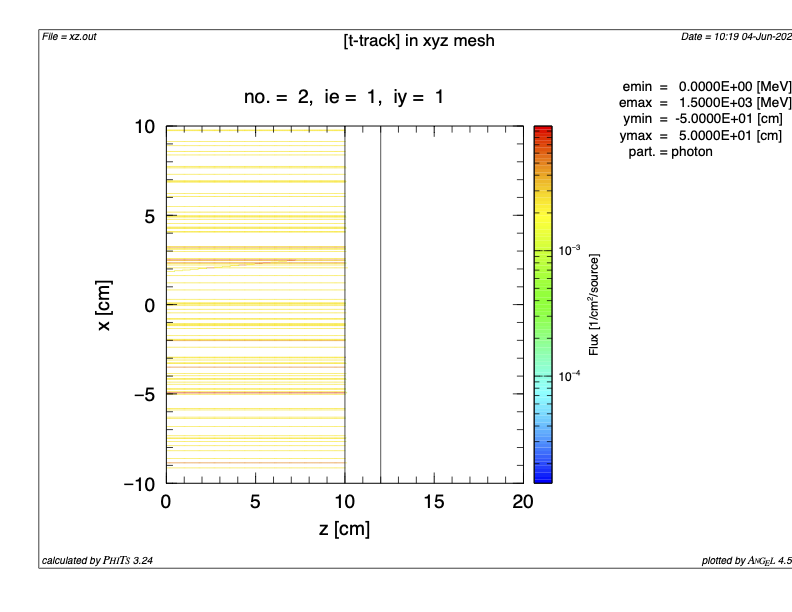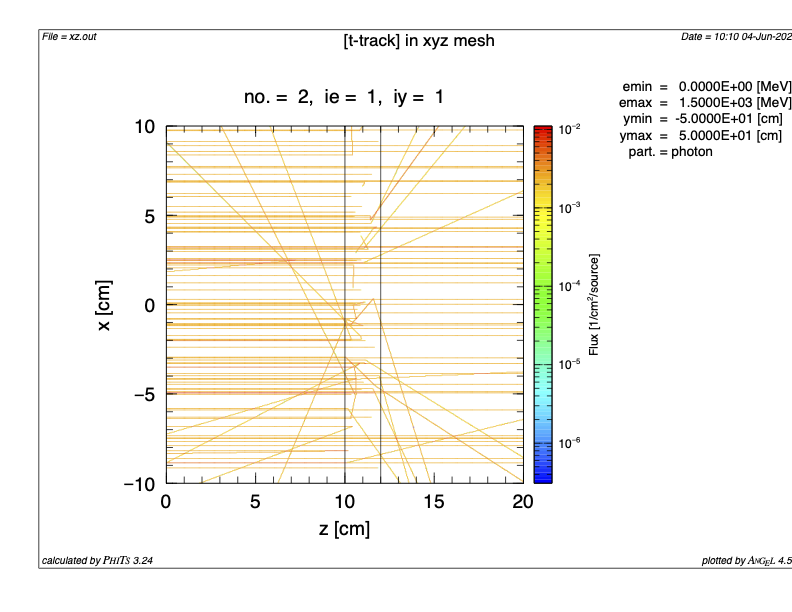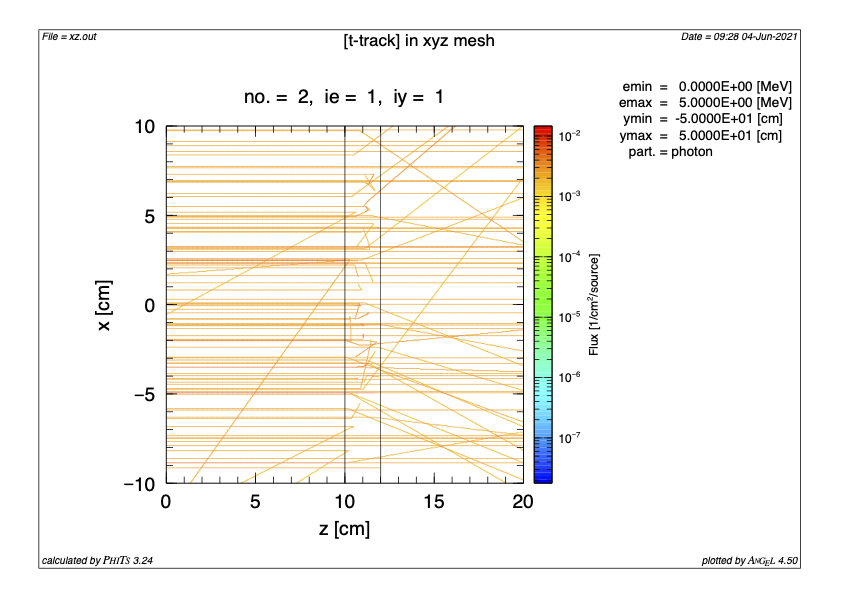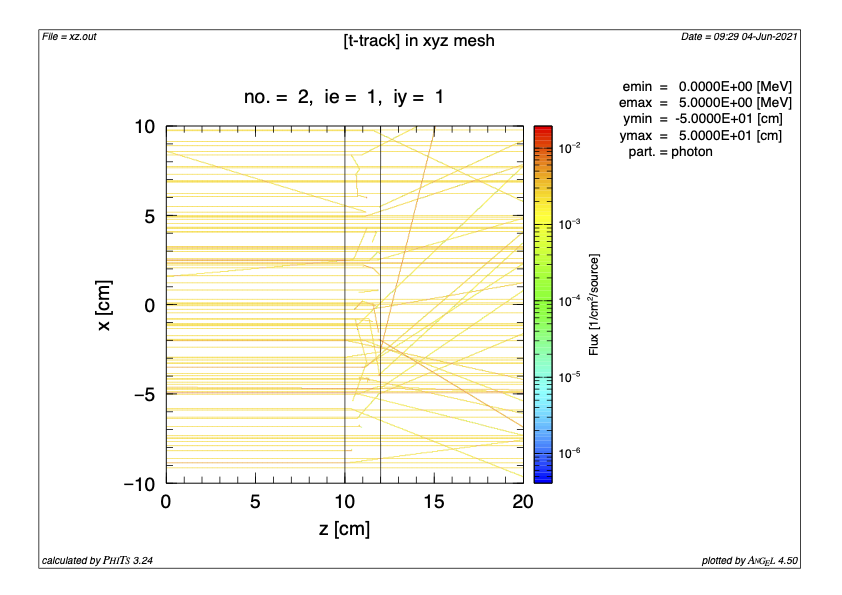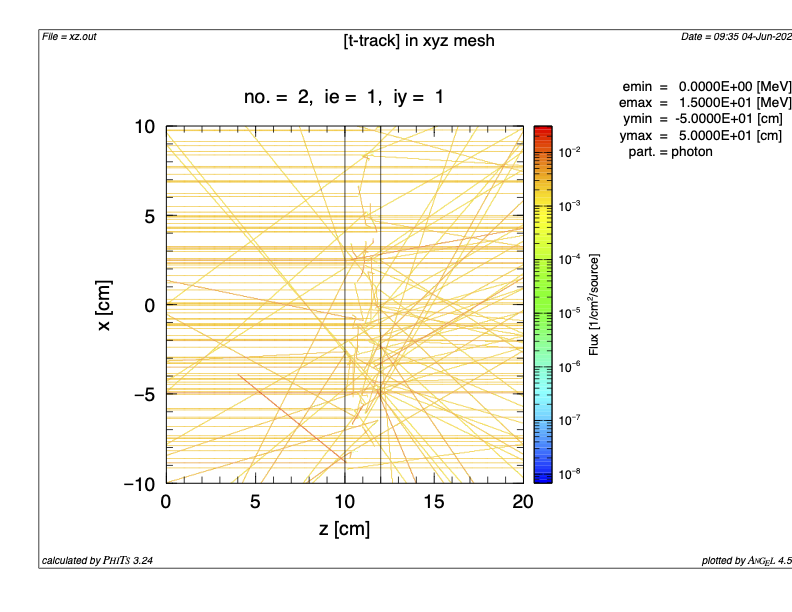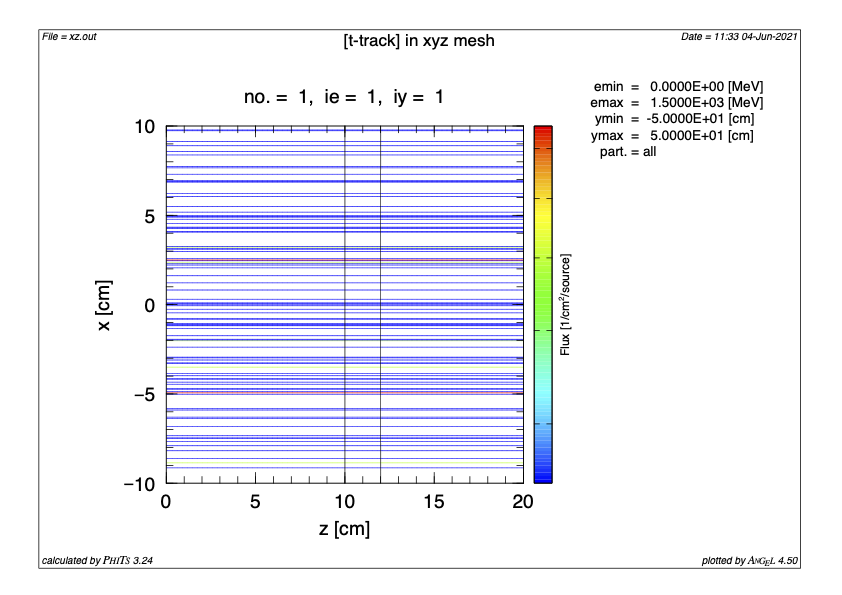 |
|||||||||||||||||||||||||||||||||||||||||||||||||||||||||||||||||
解答結果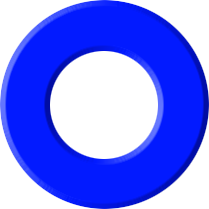 正解は「正しい」です。 あなたの解答
バックグラウンドの線量率以下の文章は正しいですか? 解説文まとめ放射性セシウムによる光子のエネルギーは限られているので、それより高いエネルギーでの計数値を用いることで、放射性セシウムが降下していないことを想定したバック・グラウンドの線量率を推定することができます(もちろん限界もあります)。 問題点の整理BGの評価事故による追加線量の推計ではBGの評価が不可欠BGは場所によって異なる
BG評価の幾何学的条件Hp(10)測定ツールでのBGの評価はon phantomで行うべきか否か
放射線防護標準化委員会
ここで提示する方法の限界
個人線量計によるバックグラウンドの線量評価においてどのような疑問が持たれているか?
事故でどれだけ増えたかを知りたい
スペクトルデータから放射性セシウムの影響を引き算できるか?
放射性セシウムの散乱を考慮できるか?
引きすぎがあるとして、その程度を問題にすべきなのか?
事故前の取り組み例鹿児島県環境保健センター脇田安彦、藤崎学 、四反田昭二他.環境放射線測定局周辺における自然放射性核種の寄与等について 放医研日本全国の自然空間放射線量の調査 放射線地学研究所スペクトルデータから自然放射線の影響を引き算している例
KURAMA-IIでの事例安藤 真樹、松田 規宏、斎藤 公明.KURAMA–II を用いた走行サーベイ測定による東日本での 天然放射性核種の空間線量率評価 同様の試み昭島市その他での事例(独)放射線医学総合研究所 (独)日本原子力研究開発機構:東京電力(株)福島第一原子力発電所事故に係る個人線量の特性に関する調査 参考資料等ECRADIATION PROTECTION NO 160. Technical Recommendations for Monitoring Individuals Occupationally Exposed to External Radiation The methods of natural background subtraction are to use either an average value based on customer geographic spread (usually a national average) or specific customer or location values. In Europe, the cosmic radiation photon and directly ionizing component is about 300 μSv per year. The terrestrial photon natural background ranges upwards from about 300 μSv per year, with considerable geographic variation (thus the total ranges upwards from about 600 μSv) [UNSCEAR 2000]. Nevertheless, for monthly issue, the use of a geographic spread average background between readouts, although adding to the total uncertainty of dose assessment, will for many services still enable the recommended accuracy requirement to be met. For example, where for whole body photon/electron dosemeters, the difference between a local and the geographic spread average natural background radiation dose is no greater than about 100 μSv per year, it would seem to be acceptable to simply use the average value. The value of 100 μSv is 10 % of the lower limit of 1 mSv for which the recommended uncertainty bound is 30%. Obviously for those instances where a dosimetry service supplies customers in areas where the terrestrial natural background is significantly greater than, or less than (an extreme case is in submarines) the national average, the local natural background dose rate will need be taken into account. Local background variation can be taken into account by the use of control dosemeters which are supplied by an ADS to a customer, and stored at the location where workers’ dosemeters are kept when not being used. In some cases, subtraction of transit doses may be done. For dosemeters issued to customers in Europe but issued and processed in the USA, natural background radiation transit doses (return trip) for an electron/photon dosemeter may be about 30 to 50 μSv. The contribution to photon/electron dosemeters of a few tens of μSv from the dosemeter wearer’s incorporated 40K can be neglected, as can, in general, the neutron cosmic radiation background. This is about 100 μSv per year, but about half is from neutrons of energy greater than 20 MeV, measured with a lower response by many detectors. A method to determine the natural background distribution is described [Stadtmann, 2007] and a method to estimate the uncertainty resulting from the variability of the natural background by [van Dijk, 1996], both methods using an analysis of the results for issued dosemeters. These methods are based on the assumption that the majority of issued dosemeters are only exposed to natural background radiation. Mean values and standard deviations can then be derived from an examination of the relationships of dose and number of days of exposure using regression analysis. 9.2 RecommendationsIt is recommended that:
9.7 NDR links to other data sources and databases9.7.1 LinksNDR may periodically share information with international organizations concerned with the characterization of occupational exposure such as ISOE, ESOREX and UNSCEAR. The sharing of dose results to perform occupational exposure studies reveals the need for harmonized procedures for generating, storing and reporting results. Different dose measurement methods may be used, however background dose subtraction methods should be considered, as well as the use of detection limits instead of recording levels. The use of notional doses, that is, a dose value on a record that does not correspond to an actual dose received by a worker, should also be avoided. IAEAIAEA Safety Standards Series No. RS-G-1.8Environmental and Source Monitoring for Purposes of Radiation Protection COVID-19の蔓延下でのBG評価用素子の設置期間の延長とBGの評価の質の関係も扱われている例Individual monitoring with radiophotoluminescence (RPL) passive integrating dosimeters 5. PROGRAMMES FOR MONITORING IN PRACTICES AND INTERVENTIONSMONITORING IN SITUATIONS OF CHRONIC (PROLONGED) EXPOSUREExternal exposure5.123. Monitoring of human exposure due to external sources of gamma radiation should be carried out by measurement of dose rates in air at locations accessible to the public. To evaluate the contribution of the radioactive contamination at the site to the effective dose, the background dose rate should be estimated and subtracted from the measurement data. ASSESSMENT OF DOSES FROM NORMAL DISCHARGESExternal exposure7.7. The assessment of external irradiation from the source is straightforward, at least in principle. When the source is discrete, the radiation fields in its vicinity may be measured (the natural background radiation should be estimated and subtracted from the results) or calculated using simple techniques. 7.8. External exposure due to radionuclides present in the plume or on the ground is generally difficult to assess from direct radiation measurements because variations in the natural background radiation are usually larger. Nevertheless, in many cases such external exposure due to radionuclides can be derived from spectrometric measurements of air contamination and ground deposition using established contamination to dose conversion models and the proportion of the year that a member of the critical group is likely to spend in the area. Reductions in exposure due to shielding by building structures as well as increases in exposure due to deposition on the walls and roofs of buildings can be taken into account if data on building structures are available or by using published default shielding factors. Internal exposure7.14. The calculation of doses from the results of environmental monitoring requires appropriate processing of the monitoring results. The background radiation, whether natural background radiation or that due to fallout from nuclear weapon tests, should be identified, generally by means of comparison with results from monitoring in an area that has not been contaminated (if such an area has been well characterized); for the calculation of doses due to releases from a source or a practice, these background radiation levels should be subtracted from the results for contamination. If the contamination is due to releases from several sources, the total dose should be calculated on the basis of environmental monitoring measurements, but it is generally difficult to attribute fractions of the dose to each source. 7. CONSIDERATIONS IN DOSE ASSESSMENTDOSE ASSESSMENT IN EMERGENCIESExternal exposure7.25. External exposure due to the deposition of radionuclides on the ground can be derived from direct radiation measurements made after the plume has passed (when the dose rate is well above natural background levels) or when spectrometry has been performed. It can also be derived from measurements of radionuclide concentrations made on environmental samples (e.g. soil, grass and rain water). External doses due to the deposition of radioactive materials are generally calculated for a limited time period, typically of a day or a few days, that is consistent with the implementation of urgent protective actions (sheltering or evacuation). For such short periods, deposition can be assumed to be constant except for the radioactive decay of short lived radionuclides. The effect of shielding by building structures may be taken into account provided that data are available and that sheltering has been effective.. DOSE ASSESSMENT FOR SITUATIONS OF CHRONIC (PROLONGED) EXPOSUREExternal exposure7.34. The set of measurements of dose rates performed at various locations where members of the critical group usually reside, both outdoors and indoors, can be used directly to assess the existing external doses. To define the contribution of a particular radiation source to the external dose, methods of field gamma spectroscopy should be applied with subsequent assessment of the dose due to particular radionuclides or subtraction of the background radiation as determined in similar conditions. UNCERTAINTIES IN DOSE ASSESSMENTS7.48. In the conduct of practices, rates of release of radionuclides are generally low and the possibilities for a detailed analysis of exposure might be limited if, for example, the external dose rate attributed to releases is of the same order as the fluctuations in the dose rate due to background radiation. In this case, the dose can be assessed as a value less than the dose estimated with the minimum detectable activity for the measurement used as input data. This dose assessment can be assigned an estimated uncertainty that takes into account the uncertainties in the parameters of the dosimetric models. 8. INTERPRETATION OF MONITORING RESULTSGENERAL CONSIDERATIONS8.9. To avoid the misinterpretation of monitoring data, a thorough understanding of the conditions of sampling and measurement is necessary. The types of conditions include: Compliance with criteria for public exposure8.24. The dose received by individuals in the population should be derived from the results of environmental monitoring, with the natural background taken into account. The background levels should be subtracted from the results of the measurements so as to assess the doses due to practices only. Both statistically significant measurement data (above the detection limit) and measurements under the detection limits can be used for dose assessment purposes with the associated uncertainties taken into account. 有意でなくても、同等とは言えないこともあります。 8.25. The source related doses can also be derived from the results of environmental monitoring by removing the base line, including natural background radiation and other sources. Such source related doses should nevertheless be interpreted cautiously since the fractions of radiation or radionuclide concentrations that are attributable to other sources may be subject to large uncertainties. Data from individual monitoring10.11. Information on measurements of external doses for individuals should include personal information, dates and times of the issue and collection of the dosimeter, device readings, and procedures for calibration and for the determination of the radiation background. Information from in vivo measurements of radionuclide activity in the human body should include personal information, dates and times of the measurements, and the activity detected in the body. Safety Reports Series No. 64Programmes and Systems for Source and Environmental Radiation Monitoring Document Preparation Profile DS5053. JUSTIFICATION FOR THE PRODUCTION OF THE DOCUMENTIn addition, the update will also consider relevant sources of information from other organizations (e.g. UNEP, ICRU, UNSCEAR, ICRP), as well as lessons from experience (e.g. the IAEA Report on the Fukushima Daiichi Accident). 読み物バックグラウンド評価の大切さCsIでのエネルギー特性厚み2cmの検出器に入射した光子の相互作用 30 keVの光子
同じ厚みの水の場合
Cs-137からの光子
2 MeVの光子
10 MeVの光子
600 MeVのミュー粒子
注意書きの例コントロール用ガラスバッジの保管方法および取扱上の注意【保管方法】【注意】バックグラウンドの評価の問題で追加線量が評価できなかった例参加医療機関の線量計の保管場所・返却遅延等の関係でバックグラウンドが高くなり解析不能となった。 校正場のバックグラウンドJISZ4511:2018 X線及びγ線用線量(率)測定器の校正方法8.6.8.3 環境バックグラウンド及び漏えい電流の補正必要に応じて,環境バックグラウンド放射線による影響及び8.6.4に規定する漏えい電流の影響について補正する。 表A.1−放射線に関する量の基準条件及び標準試験条件
注a) 測定器のエネルギー定格範囲に137Csが含まれない場合は,他のエネルギーの標準場でもよい。 附属書JC(参考) 低線量率における実用測定器の校正方法JC.l 一般 一般的に線量(率),エネルギーなどの測定対象となる範囲は幅広く,さらに,測定条件も多岐にわたるため,測定器には広範囲での校正が求められる。言い換えると,全ての測定対象範囲がこの規格の適用範囲に収まるわけではなく,また,許容範囲を,満足できるわけではない。例えば,環境レベルに近い1 µSv・h以下の線量率測定に対するニーズは高く,据置形モニタのような測定器は,現実的に設置現場での校正しか可能でない場合もある。 この附属書は,この規格に基づいて校正した8.4の標準測定器を実用標準器として,箇条9の規定に基づき,この規格の適用範囲外である10 µGy・h−1未満の空気カーマ率,及び/又は散乱線が5 %を超える放射線場の校正方法について参考として記載するものであって,規定の一部ではない。 議論例日本保健物理学会2021年度企画シンポジウム国際対応委員会セッション「IAEA DS499(免除)及びDS500(クリアランス) の動向と論点―総合討論」.保健物理,56 (3), 156 ~159 (2021) 不適切な取り扱い例薬事行政での取り組み食品衛生分野検出器汚染への対応 |

おすすめSocial issue キーワードの例新着情報
・決定しきい値(決定限界) 最終更新記事
・食品の出荷制限の解除 記事一覧アクセス数トップ10
・ホット・パーティクル hot particle |
||||||||||||||||||||||||||||||||||||||||||||||||||||||||||||||||
|
更新日:2024年04月15日 登録日:2017年07月05日 | |||||||||||||||||||||||||||||||||||||||||||||||||||||||||||||||||
|
スマートフォン | デスクトップ |
|||||||||||||||||||||||||||||||||||||||||||||||||||||||||||||||||
| © 2020 国立保健医療科学院 Some Rights Reserved. | |||||||||||||||||||||||||||||||||||||||||||||||||||||||||||||||||










